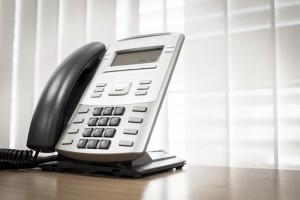 For those whose customers depend on Enhanced 911 (E911) service for their safety and peace of mind, it’s prudent to apprise them of the service’s effectiveness as well as the misconceptions that surround it.
For those whose customers depend on Enhanced 911 (E911) service for their safety and peace of mind, it’s prudent to apprise them of the service’s effectiveness as well as the misconceptions that surround it.
Emergency services over IP-based communications have improved significantly due to technological advancements and Federal Communications Commission (FCC) regulations that mandate providers to offer E911.
However, early challenges with implementation in the area of emergency services sometimes caused customers to fall prey to misconceptions regarding E911’s efficiency. Following are a few of the more notorious fallacies to which customers are subjected.
1. Offering this service is not required by law.
Whether or not the FCC requires a provider to offer a ready-to-implement E911 Voice over Internet Protocol (VoIP) solution is contingent upon the other services that provider offers. Providers that utilize public switched telephone networks are mandated to provide such solutions. Providers must also be prepared to guarantee proper routing to the appropriate public-safety answering point (PSAP).
2. E911 only works reliably with landlines.
When this service first came into being, technological constraints led to practical limitations. From a consumer’s perspective, the closest analogy is that of two operating systems for personal computers; they perform the same function, but do it very differently. In an emergency situation, it is vital that the customer’s physical location is obtained accurately to facilitate the emergency call being routed to the appropriate PSAP. In the case of a cell phone user, the phone number and location of the receiving antenna are sent to a dedicated switch for E911 calls. This routes the call to the appropriate PSAP, then on to a call center operator who can see the caller’s exact location based on GPS triangulation. So consider this myth busted. E911 works well, and emergency responders can indeed pinpoint a caller’s location.
3. Tracking ability is inferior to that of traditional 911.
This is one of the easier fallacies to debunk because the proof is onscreen. With the current VoIP systems, comprehensive reporting on network activity and real-time metrics is available. Customizable online dashboards and application programming interfaces (APIs) facilitate the updating of customer information so that it can be associated with the appropriate PSAP. These tools also aid in planning for the expansion of coverage areas.
Every second counts in an emergency, and it is crucial that customers know VoIP service is not a trade-off of technological novelty over security. This is a service that has come of age, and those directly interacting with customers should be able to easily address their concerns, especially if they’re based on myths loosely centered around the performance of older technology.
















